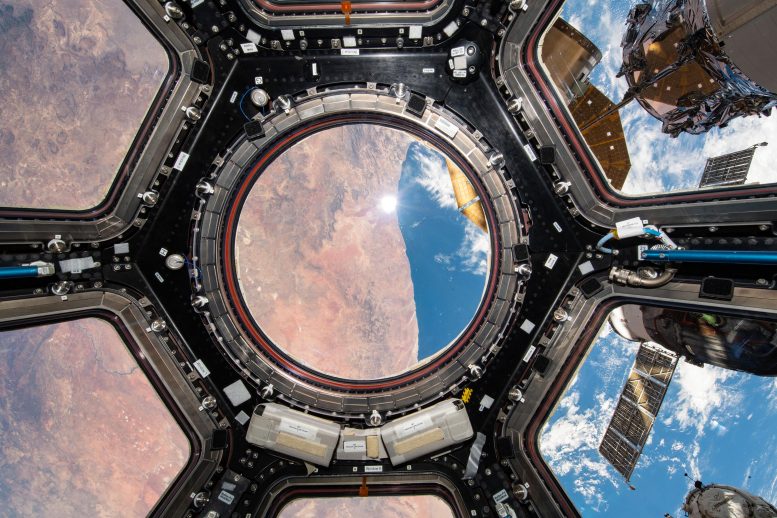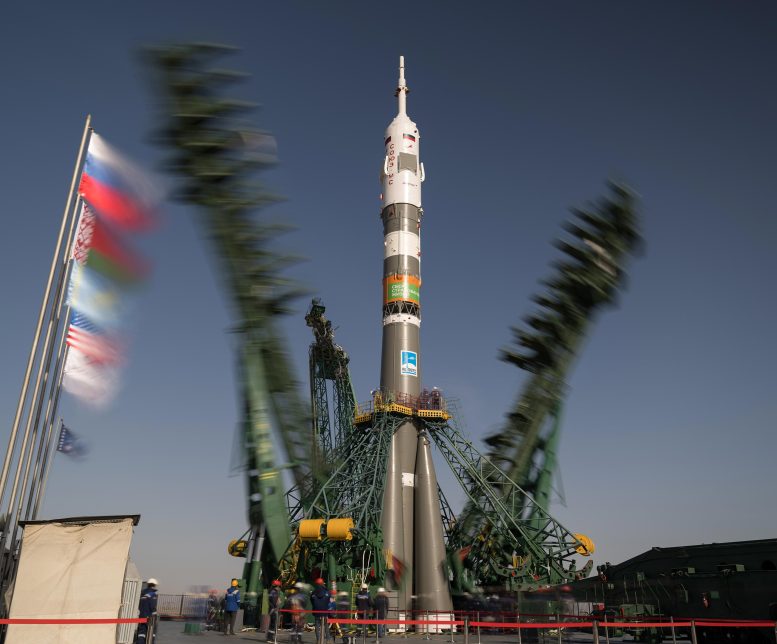
The southern coast of Africa is pictured from the International Space Station’s “window to the world,” or cupola, as it soared 265 miles above. Credit: NASA
One crew and one cargo spacecraft on two different continents are counting down to launch as the seven orbital residents aboard the International Space Station (ISS) spent Wednesday, March 20, exploring how space affects the immune system, carrying out robotics activities, and connecting with students on Earth.
Crew Launch and Resupply Mission
Three crew members are gearing up to launch from the Baikonur Cosmodrome in Kazakhstan on Thursday, March 21. NASA astronaut Tracy Dyson, cosmonaut Oleg Novitsky, and Flight Engineer Marina Vasilevskaya of Belarus will lift off aboard the Soyuz MS-25 spacecraft at 9:21 a.m. EDT and take a short ride to the station, docking only a few hours later at 12:39 p.m., joining the Expedition 70 crew in microgravity. This will be Dyson’s third trip to the orbital complex, where she will spend six months conducting research in low Earth orbit.

In this 30-second exposure photograph, the gantry arms are seen closing around the Soyuz rocket at launch pad at Site 31, Monday, March 18, 2024, at the Baikonur Cosmodrome in Kazakhstan. Expedition 71 NASA astronaut Tracy Dyson, Roscosmos cosmonaut Oleg Novitskiy, and Belarus spaceflight participant Marina Vasilevskaya are scheduled to launch aboard their Soyuz MS-25 spacecraft on March 21. Credit: NASA/Bill Ingalls
Only a few hours after the crew arrives, NASA’s SpaceX 30th commercial resupply mission will lift off from Space Launch Complex 40 in Florida. The Dragon cargo craft, scheduled to launch at 4:55 p.m. on Thursday, will carry an array of new science and technology investigations, as well as food and supplies for the crew. Dragon will orbit Earth before autonomously docking to the zenith port of the Harmony module at 7:30 a.m. on Saturday, March 23.
Scientific Experiments and Educational Outreach
In microgravity, the crew split up duties on Wednesday as they prepare for the upcoming station traffic. In the morning, Flight Engineer Matthew Dominick of NASA collected samples for the Immunity Assay investigation. Afterward, Flight Engineer Jeanette Epps of NASA processed the samples for the experiment. Immunity Assay looks at the impact of spaceflight on cellular immune functions in blood samples, tests that could only previously be conducted on Earth. With new tech, processing samples inflight helps researchers gain a better understanding of astronauts’ immune changes during long-duration space missions.
Dominick and Epps later teamed up to reconfigure some of the cameras aboard the station that the crew uses to take photos of research, Earth, and more.
In the Japanese Experiment Module, Flight Engineer Michael Barratt of NASA powered on the free-flying Astrobee robots and conducted a Zero Robotics tech demonstration. Zero Robotics allows students on Earth to write software to control Astrobee, inspiring the next generation of scientists, engineers, and explorers.
Afterward, Barratt teamed up with Flight Engineer Loral O’Hara of NASA to conduct an ISS Ham Radio session with a school in Greece. During the session, Barratt and O’Hara answered questions from students about living and working in space.
In the Nauka module, Flight Engineer Nikolai Chub replaced air ventilation filters, and then moved on to collect and process water samples from the Roscosmos water processing system. Flight Engineer Alexander Grebenkin practiced his piloting techniques during a Pilot-T session, while Commander Oleg Kononenko prepped for Soyuz’s arrival as he will be on deck to monitor the autonomous docking of the spacecraft.
